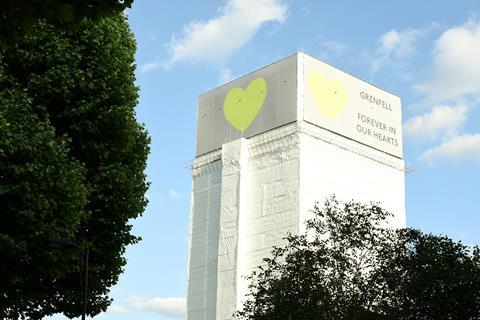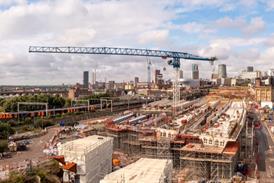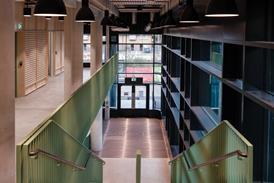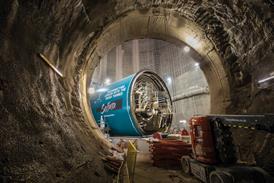As would be expected, contingency planning has been put to the front of the business agenda once again.
The very nature of recent bombings has highlighted the pitfalls of certain contingency planning and demonstrated the need for a rethink on security issues.
The impact of a bomb
To be able to implement appropriate precautions, it is necessary to understand the effect of a terrorist attack on the average company.
In the case of car or lorry bombs, a fireball will be created in the immediate proximity of the device.
The blast will cause a high-pressure wave that would radiate at high speed and envelope the building. The pressure would push the windows inwards at the back of the building in short duration, in less time than the milliseconds it takes to open a car airbag. A crater is formed, which may cut the electricity supply and can take out the water or gas mains. In one of the IRA London bombings the water mains were completely taken out by the explosion.
The primary fragments of the vehicle are projected outwards. In the Bishopsgate bombings a fragment landed on top of the NatWest tower, over 150 meters away. Considerable distances are travelled at high velocity.
Ground shock. The transmission of shock through the ground affects different areas of the building. One of the main tasks a company needs to do is assess who or what they want to protect. In some cases computers have been seen as more valuable a commodity than the people employed.
With a suicide bomber, the explosion is likely to be inside the building, which will obviously cause significant damage to both the building and to any people within about 25 meters.
It should be noted that the blast effects for an internal explosion are considerably more onerous than those for an external explosion of the same charge weight.
Threats to companies
To protect a building, the logical and obvious golden rule is to keep the bomb as far from it as possible. Many companies, however, inadvert-ently create opportunities for terrorist attack by maintaining areas that are prone to attack.
- Underground parking – A key target used to great effect in the bombing of the World Trade Centre in 1993. Then, a van was placed in the parking basement of the World Trade Centre and the resulting explosion killed six and injured thousands.Following this, security became extremely controlled.
- Post rooms – For many companies these are within the company's main building, and consequently if a device is delivered and explodes then the entire building may be affected. Ideally, the post room should be in a separate building.
- Suicide bombers – It is crucial to keep them out of the building with vetting/checking at perimeter security checkpoints and the building entrance protected by security access control measures.
Blast pressures decay with distance. In fact, during a heightened state of alert, all MOD buildings have no parking within a 25-metre radius. With airports this is 30 meters.
Creating a 'refuge area'
After September 11, many companies reassessed their security. Concrete bollards were put in place; car parks, that were too close to the building, were closed off; and water features were introduced.
As medieval castles had moats as defence, so companies began to understand that to protect you had to keep the distance between you and your potential enemy.
There should also be a difference between staff car parking and visitor car parking. It is easier to know your own staff than any visitor to the company, so visitor parking should be the furthest away from the building.
Suicide bombers offer a different type of threat and it is difficult to protect against a determined attack using force, but obviously the main objective is to keep such forms of attack out of buildings and as far away as possible. Measures that could be put in place include perimeter security vehicle barriers and traffic calming measures to reduce vehicle speed.
It is all about expert risk assessment, and it is just as important for small businesses to have contingency plans as for multinationals
The most secure building is a bunker. Indeed years as an IRA target have allowed security analysts to put that technology to commercial use. Unfortunately we cannot all work from bunkers, we need to have light, and therefore we need glass, which is problematic.
'Accommodating' the blast
In most explosions, over 90 per cent of injuries are caused by flying glass. All forms of glass perform differently in an explosion. The most hazardous is annealed glass, which was used in sixties-type domestic buildings.
From there we progress to laminated glass, toughened glass, anti-shatter film, and a mind-boggling array of different glass treatments aimed at reducing the effects of a blast.
The ideal situation is no glass at all, but a company needs a balanced solution, which is why it is better to leave this to the experts.
Buildings need a strong enough skeleton to withstand the effects of a bomb blast. More modern buildings usually have a structural element able to 'flex' and accommodate the blast without collapse, although there may still be significant façade damage.
Older buildings, made of stone or other load-bearing walls, cannot flex, having to absorb the entire blast impact.
In the 1993 bombing of the City of London, St Ethelburga's church collapsed after the load-bearing walls at the base were damaged, undermining the structural integrity of the entire building. Another example is the Grand Hotel, Brighton, where the bomb blast caused structural damage, resulting in collapse.
When planning the layout of the building the core areas of the building should be in the centre, ideally with the corridors on the outside. The most valuable commodities should be approximately two-thirds the way up the building, as the bomb loses its force the greater the distance away from the blast.
Open plan offices tend to be a "flimsy" alternative to older, more robust buildings. Security advisors can be consulted to advise where walls should be reinforced and where secondary security walls should be built.
One other option is the creation of a refuge area. Security experts can assess a building and designate an area within the building where people can be evacuated to in an alert.
The danger is that in the panic people may inadvertently go into dangerous areas.
When the IRA bombed Manchester in 1996 many did not know where the bomb was and, as a consequence, did not know where to evacuate to – it can be far safer to stay in a building where people are at less risk of flying glass and falling debris, than outside.
Contingency planning is vital. In the case of the London bombings of the nineties many banks found themselves in difficulty when both their main and back-up offices were in the same area, meaning that all data was lost. It is far better to ensure that your offices are in different locations, with the back up data not in too close vicinity to the original files.
One merchant bank had its backup offices in the second World Trade Centre tower, but then again, the perceived risk at that time that both towers would succumb to attack was almost non-existent.
Downloads
Protecting the core areas
Other, Size 0 kb
Source
Security Installer
Postscript
Chris Bowes is a director in the security and counter terrorism division of TPS Consult, which has worked on many of the most prominent public and defence buildings in the UK.




















No comments yet